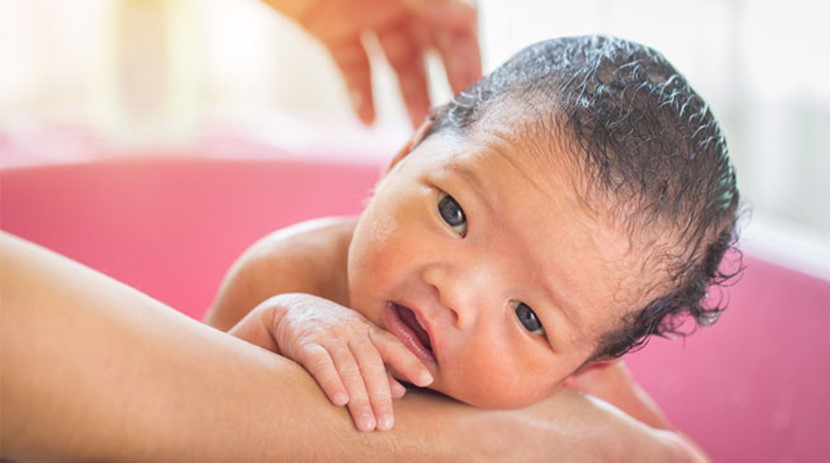Bathing your baby

Babies almost always squirm and protest while you try to bath them, so here are some tips to make this bonding time safe and enjoyable for you both!
Your newborn won't need bathing very often, maybe only once a week or so, provided the essential nappy area is washed and dried properly every day.
The hospital will show you how to bath your baby, but aside from technique, bath time should be relaxing for both of you.
Firstly, have the room warm and free of draughts. Make sure the bath is a comfortable height for you. Also make sure that everything you need for washing, drying and dressing is within reach.
Check the temperature of the water.
The most important part of how you bath your baby is the way you hold your baby so he can't wriggle or slip free. When you put your baby in the bath, support his shoulders and neck on your inner forearm and wrist, hooking your hand around to the baby's far shoulder and cradle his bottom with your other hand. There may be a startle reflex as the baby is used to close spaces and being held tightly. You can put a warm wet washcloth on his chest to help him feel a little more secure.
Keep your baby semi-upright with the same inner forearm and gently splash water over the body. When you are finished, take the baby out of the bath the same way you put him in. Wrap him up in a nice warm towel as babies lose heat very quickly. When you're ready to dress him again, make sure you dry carefully in all the creases, especially the neck area, which can get red and sore if left wet.
Never leave your baby alone during a bath, as they can drown in just a few inches of water.
Your baby's umbilical cord stump dries and drops off within a week of birth. You should clean this area to avoid any infection. Use a surgical baby wipe, which contains pure alcohol, to wipe the skin creases around the stump. Keep doing this after the stump has separated, so it heals quickly.

